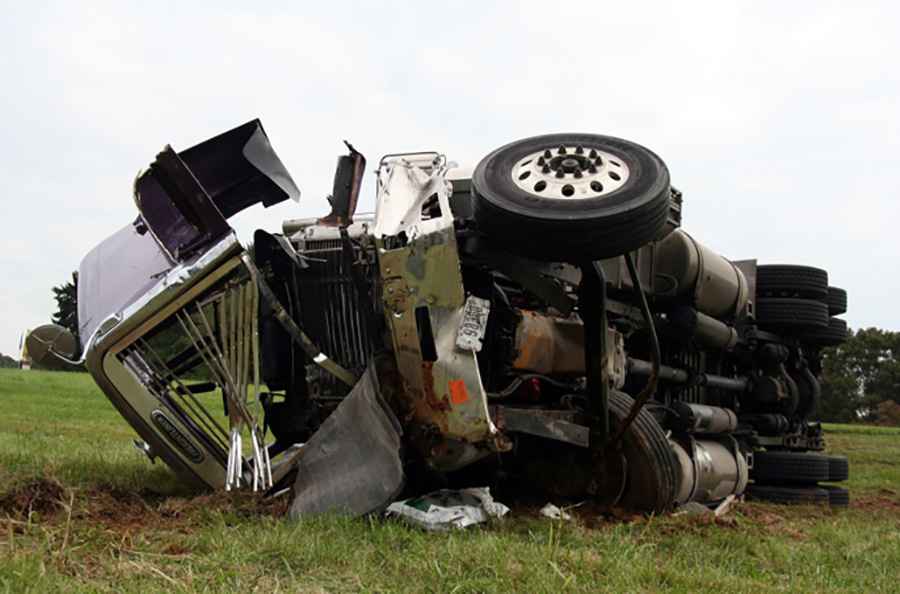6 Pieces of Evidence You Need to Collect in a Semi-Truck Accident Case
Trucking accidents can have severe repercussions, resulting in years of agony, reduced quality of life, or even death. Unfortunately, these kinds of mishaps occur far too regularly. According to the FMCSA- Federal Motor Carrier Safety Administration, 499,000 large truck crashes occurred in 2022. These accidents claimed the lives of around 4,400 people.

When this type of tragedy occurs, the victims or family members of deceased victims may be able to seek compensation through a personal injury or wrongful death lawsuit. However, for that litigation to have the highest chance of success, the plaintiffs must present the strongest evidence available.
Here's a look at the evidence needed to prove your case in Toledo. Toledo is the county seat of Lucas County and is located in northwest Ohio. It is home to several world-class healthcare institutions that can treat you following an automobile accident.
Toledo lawyers have extensive expertise assisting local injury victims and will advise and assist you in documenting your medical care and the expenditures related to your injuries. If you or someone you love suffers harm from a trucking accident caused by a negligent party, get in touch with a Toledo semi truck accident attorney as soon as possible. They will listen to the details of your case and then let you know how they can help. They will also increase your chances of success by standing up for you in court since they have experience in the field.
Police Reports
When investigating a truck accident, police reports are critical evidence. They contain vital information regarding the accident, such as the date, time, and location of the collision, as well as the names and contact information of witnesses and drivers, as well as any tickets or charges issued by law enforcement.
Eyewitness Testimony
Expert witnesses who testify in your favor can significantly enhance your case. Based on the analysis and a study of the event, an expert in accident reconstruction, for example, can state what they consider to be the causes of the accident. Medical professionals can confirm the extent of your injuries and their long-term implications on your quality of life. They can also testify about the cost of your therapy.
A skilled attorney can not only identify experts to testify, but they can also work to discover eyewitnesses to the accident and get statements. These statements can assist you in proving that the truck driver was irresponsible and is to blame.
Data Recorders
Trucks generally contain a "black box," a data recorder that functions similarly to the black box used in airplanes. It monitors what happens with the truck's mechanical system when operating. It can also depict the driver's behavior before the accident.
It can, for example, record how fast the vehicle was traveling at the time of the crash and whether or not the brakes were applied. It can be an extremely significant piece of evidence in determining whether or not a driver was breaking any traffic laws at the time of the collision.
Medical Records
Medical documents can also be crucial in proving your case. Keep every receipt, doctor's letter, or other record relating to the injuries and treatment you've received. Prescriptions, medical bills, scans, test results, and anything else fall under this category.
Weigh Stations and Loading Dock Reports
A trucking accident occurs frequently because a truck is overloaded or inadequately loaded. Overloading a truck can cause an imbalance, making the truck difficult to handle. If too many objects are on one side of the cargo hold, the truck may slide or roll over. If cargo is not adequately secured, it has the potential to shift, increasing the likelihood of a rollover accident.
Weigh station data and information from loading dock reports may aid in proving that improper loading contributed to the accident.
Logbooks
The United States Department of Transportation has tight standards governing how much time a truck driver can spend behind the wheel. According to USDOT regulations, drivers cannot be on duty for more than 14 hours, with no more than 11 hours spent on the road.
Furthermore, drivers cannot drive for more than 60 hours in seven days. After this time, drivers must wait at least 34 hours before beginning another driving session. A driver must rest at least 10 hours before beginning their next daily shift.
Drivers must keep log books demonstrating how long they operate their trucks to comply with the requirements. If the logbook shows USDOT workload violations, that could be another great piece of evidence in your favor. A knowledgeable attorney can obtain the logbook and decipher its contents. They will also be able to detect any manipulation of the records.
Bottomline
A complete approach to investigating a truck accident is required, which includes obtaining critical data and employing the knowledge of professionals in the legal, medical, and trucking industries. Lawyers and investigators can establish a compelling case for truck accident victims by compiling police reports, eyewitness testimony, physical evidence, electronic data, and medical records. Furthermore, accident reconstructionists, medical specialists, transportation industry experts, vocational experts, and forensic experts can provide vital information and evidence in court that can help the victim.